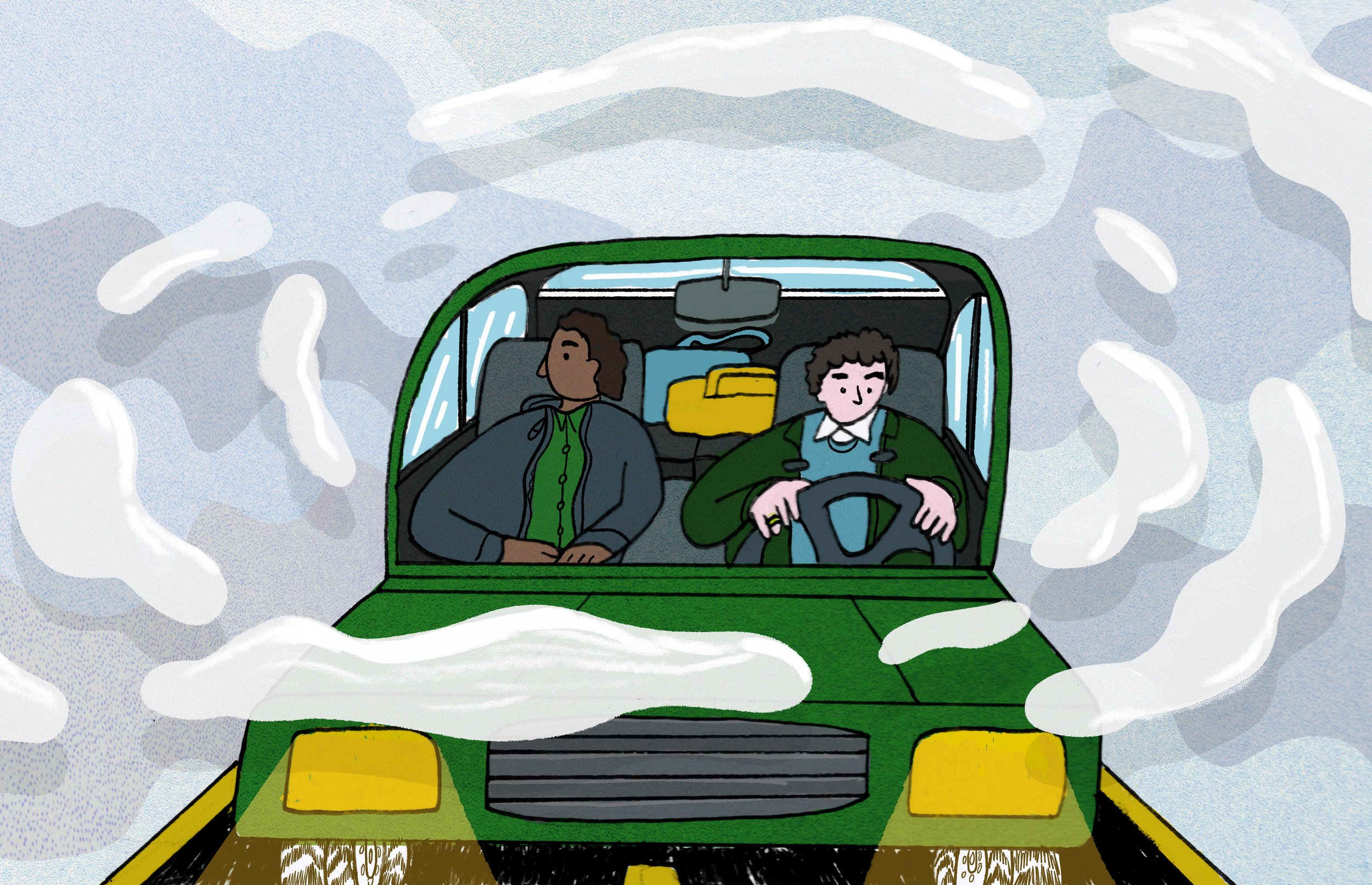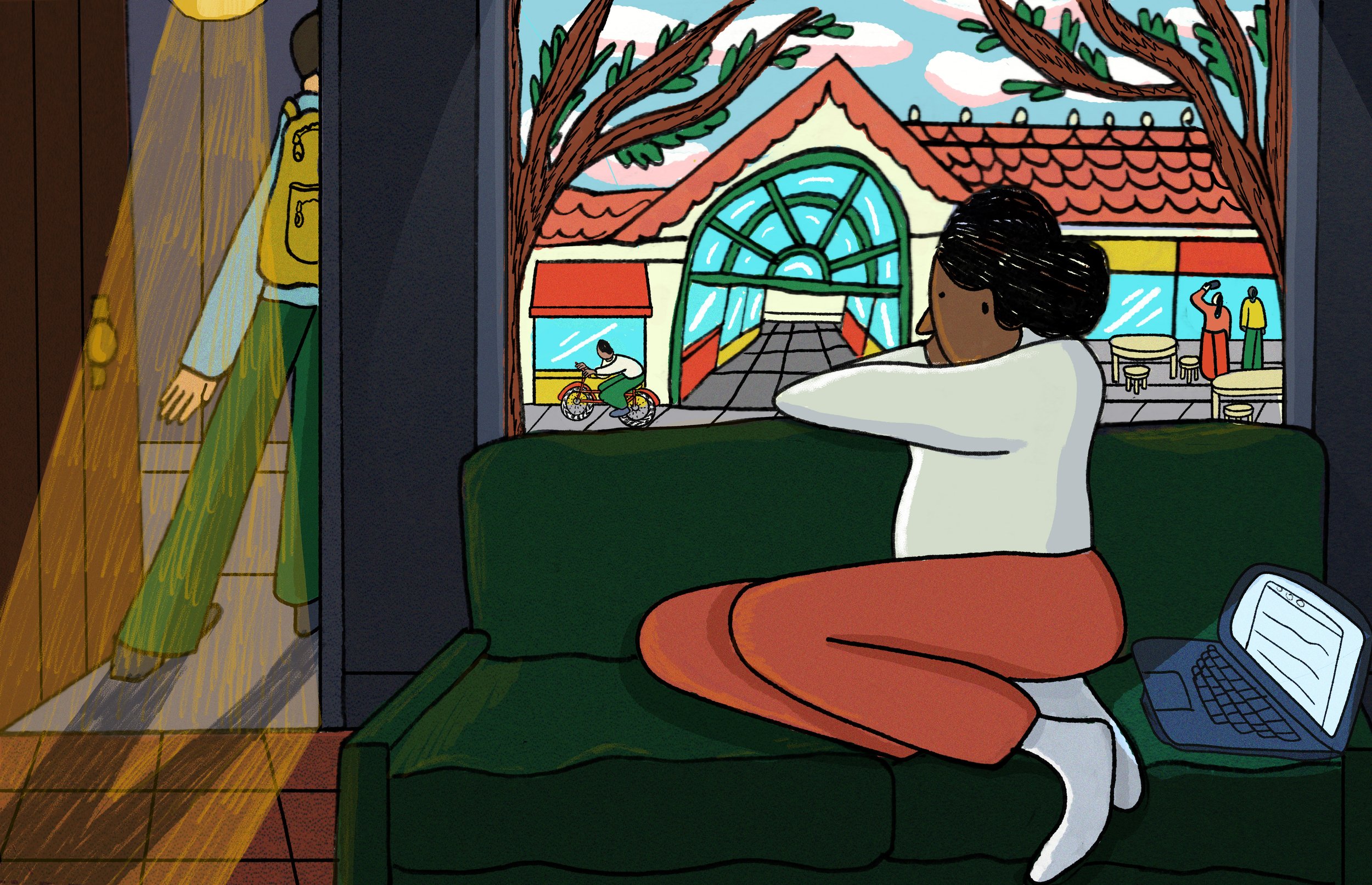4 a.m. in Rural Alberta

4 a.m. in rural Alberta is quieter than it should be. I should hear the night sound of crickets, or maybe the wind in the brittle grass, but the fog has eaten anything that makes noise. It’s eating me, too. Seeping through my coat and into my mouth and nose. Blinding me but for all of ten feet ahead. I inhale the scent of damp things; the October haze smothers even my frosty-white exhale. Just last night, I was warned,“We don’t get fog here—we get soup.” I gingerly descend the porch steps, grateful I know them by memory. The fog nips at my ankles. I realize soup is not hyperbole.
The car unlocks with a click that doesn’t echo. Its lights flash once before conceding to the fog. Our footsteps are muffled crunches through the gravel driveway, and I could swear even the air is tense, so heavy and still it would crawl into my lungs if I tried to speak.
There’s no fog in the car, but I can still taste it. The engine turns over, the heater comes on, and hanging over the metal smell of hot air is the quiet. The headlights illuminate no more than several feet—a few meters—but I can’t bring myself to point it out. My partner is used to this kind of drive, a single hand draped unconcerned over the wheel. But we both know this isn’t a fog that just lets you go. It’s a white-gray wall around us, solid and transient at once as we accelerate through its grasp. It’s a plea. Don’t go. I look away from my partner, twisting the ring I’m not used to yet.
We drive. 15 kilometers under the limit, and it’s not slow enough. There’s no world out there. It’s just us, in this glass bubble that feels airless anyway, my fingertips digging into the seat below me. I’ve never been claustrophobic before, but I’m going to start here and now. I make myself forget the bags in the backseat. The headlights reflect and scatter off the fog, and a gust of wind sends the white into a frenzy before it settles back down, intent to pin us here.
I’m staring through the windshield into nothingness. I think I’m drumming my fingers, but when I try to still them, they’re already clenched into fists. I refuse to take my eyes off the sliver of road I can see beneath the fog. One yellow stripe at a time slides into view before disappearing past our car.
The fog sputters. There’s a flicker of black, and then white, and then the fog coughs us out into the dark. I whip my head around to look out the rear windshield, and it’s like we came through a solid wall of empty white. The night ahead is perfectly clear. I can see the pinpricks of city lights and the black foothills rolling towards the unseen Rockies. We are alone on the open road. Even the sky is empty this early; there is no whistle of overhead planes as we near the airport. And all of a sudden, I want the car to turn around. I take it back—I’m not claustrophobic. We’re in the open, exposed. And we’ll be there soon. We can’t be there so soon.
And then we’re merging onto Airport Road with its orange floodlights, and there’s the dropoff lane, and my fiancé is parking in front of Terminal E: departures to America. Our hug smells like lingering fog and car exhaust and my partner’s laundry detergent. This is the smell of love and grief. We step apart; I stagger with the weight of my bags and my one-way ticket. And I watch my fiancé drive back into the fog.
About the Author
E Henrikson (they/them) is a recent English graduate and aspiring writer. When not writing, they can be found working on spreadsheets and drinking something caffeinated. They currently live in Illinois.
Illustration by Jane Demarest.
Edited by Aube Rey Lescure










